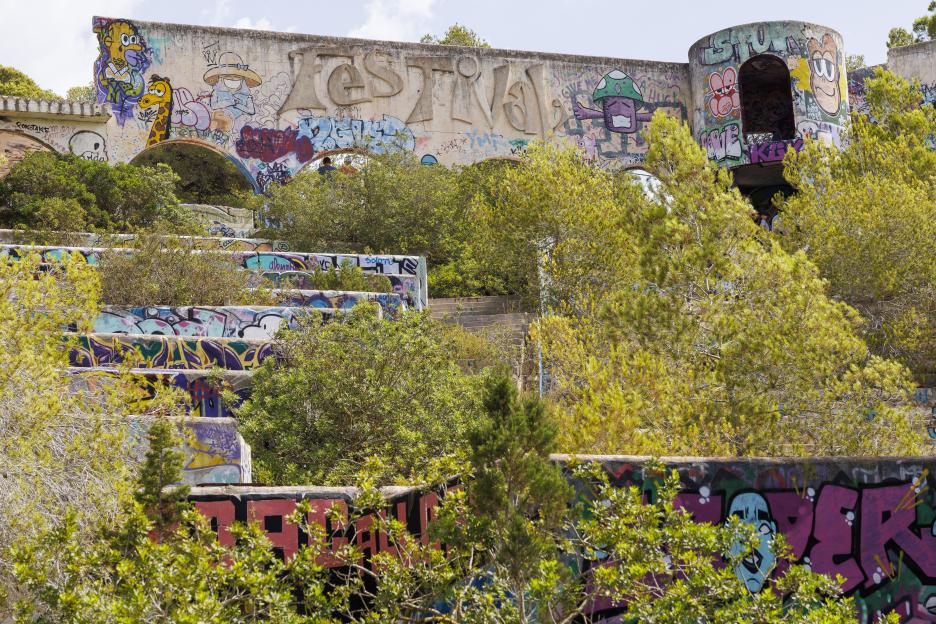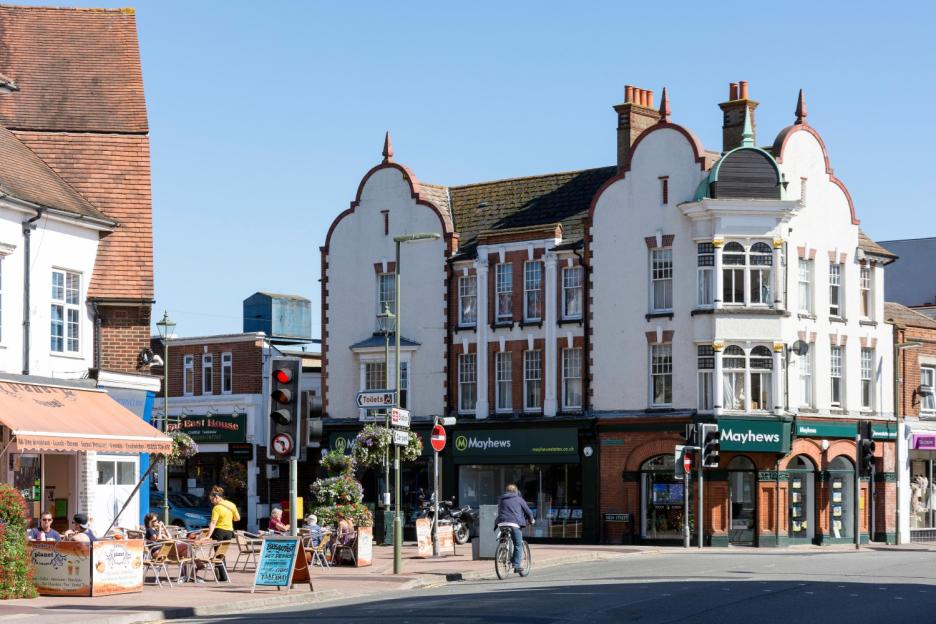IBIZA is the undisputed clubbing capital of the world, with dozens of industrial-scale dancefloors that are packed with revellers every night of the season.
But the didn’t always exist as we know it today â as I found out when I stepped inside the ruins of an abandoned “superclub”.
 Sun man Patrick Harrington visited the abandoned ‘superclub’ â which is now a popular tourist spot
Sun man Patrick Harrington visited the abandoned ‘superclub’ â which is now a popular tourist spot It’s now a haven for graffiti artists and left to be taken over by nature
It’s now a haven for graffiti artists and left to be taken over by nature It was only in business for two years from 1972 to 1974 â but its notoriety has stood the test of time
It was only in business for two years from 1972 to 1974 â but its notoriety has stood the test of timeIt took a wave of dreamers in the 1970s with visions of a utopia, soundtracked by Balearic beats, to begin attracting dancers to the island.
One of their most important early creations was Festival Club â touted as Ibiza’s first superclub â a term still used today to describe sweeping, high-profile clubbing venues.
The vast hillside space pioneered the scene and paved the way for the likes of iconic party destinations such as Space, Pacha and Amnesia.
It was only in business for two years â 1972 to 1974 â but in that time served as a haven for hedonism and excess.
Relatively little is known about its heyday, but rumours say that Bob Marley even played there once.
The building in the hills above San José has been abandoned for over half a century, and is now a dystopian playground for curious tourists and Instagrammers.
Its crumbling walls are also a canvas for graffiti artists â with fantasy beings and bold slogans covering every inch.
Stepping into the site is a surreal experience.
After driving up into the scrubland, an old painted wall is all that’s visible from the road â but when you cross the threshold, a sprawling concrete complex unfolds down the hill.
At the top of the site is a large covered building with many rooms, harbouring a network of corridors and dark corners.
Outside that stretches an open patio, with a wall of in-built arches presiding over the brow of the hill.
Down to the left, a massive, semi-circular amphitheatre is carved into the slope, complete with row upon row of concentric seats.
Most surprisingly, this open-air ring hosted actual bullfights for guests’ entertainment â though only with young bulls and without any of the bloodshed.
On the main slope, around 20 staggered terraces lead down to the primary dance floor.
 A poster for the Festival Club in Ibiza
A poster for the Festival Club in Ibiza Around 20 staggered terraces lead down to the primary dance floor
Around 20 staggered terraces lead down to the primary dance floor The site is now a sea of graffiti-covered walls
The site is now a sea of graffiti-covered walls Sun reporter Patrick Harrington visited the ‘superclub’ in Ibiza
Sun reporter Patrick Harrington visited the ‘superclub’ in IbizaSquatting right at the bottom is a huge stage area â from where the DJs and performers commanded the show.
Eerie modern additions like fridge doors and wrecked-out cars can be found arranged randomly around the site.
While much of the club has turned to rubble, some details remain that transport you back to those hazy days.
The odd square of mirror-wall can be found on the dusty walls, and many of the bathroom tiles remain in place.
And standing inside the arches at the top to survey the ruins, you can just imagine looking down on hundreds of people dancing beneath the moon.
Coach tours were king in the early 70s, so most who visited the club were international tourists carted up into the hills by buses.
 The expansive views from the top of the ‘Festival Club’
The expansive views from the top of the ‘Festival Club’ Right at the bottom is a huge stage area where DJs and performers commanded the show
Right at the bottom is a huge stage area where DJs and performers commanded the show ‘Festival Club’ was forced to close its doors after the oil crisis of 1973 stifled tourism
‘Festival Club’ was forced to close its doors after the oil crisis of 1973 stifled tourism The original ‘Festival Club’ sign is seen left untouched by graffiti
The original ‘Festival Club’ sign is seen left untouched by graffitiSadly, Festival Club was forced to close its doors after the oil crisis of 1973 stifled tourism.
Air travel became more expensive, and this gutted the club of its main lifeblood.
Festival Club always had aspirations of reopening, but it never quite happened.
In the 80s and 90s, the newly abandoned spot served as an ideal setting for unofficial raves â meaning thousands more were able to enjoy the party palace.
But as the years ticked by, nature slowly reclaimed the site.
Pine trees have pushed up between cracks in the concrete, and time has bitten chunks from the walls and floors.
Subsequent decades of explorers visiting the club are evident in the broken bottles and empty spray canisters that lie strewn across the ground.
But as the ruins slowly melt into the hillside, they continue to serve as a monument to those original visionaries.
Festival Club’s instigators could scarcely imagine what would eventually become of the little White Island in the Med.
 Walls have crumbled where the site has been left untouched for decades
Walls have crumbled where the site has been left untouched for decades Explorers visiting the club are evident in the broken bottles and empty spray canisters that lie on the ground
Explorers visiting the club are evident in the broken bottles and empty spray canisters that lie on the ground The newly-abandoned spot served as an ideal setting for unofficial raves
The newly-abandoned spot served as an ideal setting for unofficial raves The site is hugely popular with urban explorers and tourists
The site is hugely popular with urban explorers and tourists 






